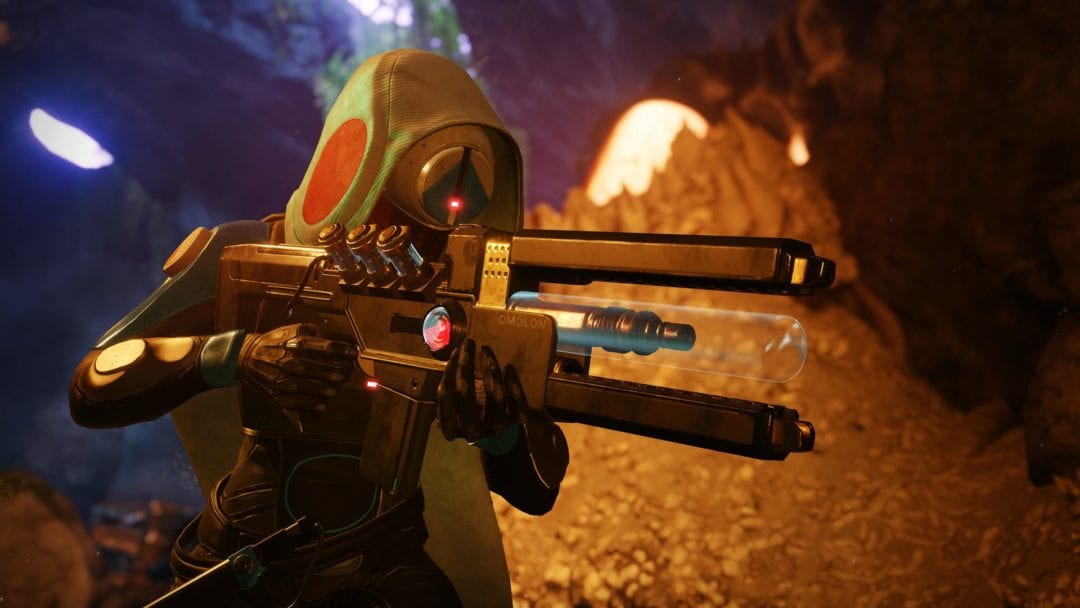Over the last few weeks, it appears that Activision has gone off the rails and is now caught in a spiral of misfortune and bad news. The information coming out of the company is grim, shocking, and quickly becoming a rich source of schadenfreude for longtime critics of the company. We’re talking about lawsuits, investigations, firings, and the loss of an entire studio. But before we can dig into the news, we need context.
Activision is a confusing company to talk about. Normally I just refer to it without making a clear distinction between the parent company and the subsidiaries because I don’t want to waste a paragraph describing its annoying corporate structure every time it comes up in conversation. But this time we need to understand the companies involved, which means we need this chart:
Activision Blizzard is a parent company with five subsidiaries, three of which also have either Activision or Blizzard in their name. We’re familiar with the paradigm where a publisher owns a bunch of studios, but in this case we have a publisher that owns both developers and other publishers, some of which are named after itself.
For the purposes of this discussion, I’m mostly concerned with the subsidiary Activision on the left and Blizzard Entertainment on the right. They’re both controlled by the parent company, but they have radically different personalities and make very different products.
Activision was previously run by Bobby Kotick. He’s now in charge of the parent company, but Activision still follows the style and business practices that made him infamous. The company is focused on cranking out sequels and has a reputation for being aggressively litigious. It’s also a fan of scummy microtransaction ideas. Its business model leans towards finding something that works and then running it into the ground. The company values quantity over quality and isn’t above releasing a terrible game to meet a predetermined ship date. The most recent example is the misbegotten Tony Hawk’s Pro Skater 5, which was a mess across the board. Activision certainly knew that the buggy gameplay and lackluster graphics wouldn’t live up to the standards of the series, but it was released anyway.
By contrast, Blizzard is known for making games very slowly. From 2005 to 2010, Activision released 20 games in the Guitar Hero franchise but Blizzard released just one game: StarCraft II: Wings of Liberty. Blizzard prefers to spend a long time testing and polishing its games, and isn’t willing to push an unfinished title out the door. This doesn’t mean the company is flawless. It’s admitted to blunders like the Diablo III real money auction house. The difference is that Blizzard’s faults are the result of misjudgement rather than contempt for the consumer. Blizzard is so beloved that it has a convention, which welcomed 40,000 enthusiastic fans last year. If Activision ever tried to host a convention, the only attendees would be protestors.
The key takeaway here is that Blizzard feels like the black sheep of the family. It’s unusual for a subsidiary to be so different from its parent company in terms of behavior, values, and corporate culture. I’ve always assumed that this was due to the fact that Blizzard made insane amounts of money from mega-hits like World of Warcraft, and so perhaps the suits at Activision Blizzard were afraid to tamper with the golden goose. At least, that seemed to be the case until this year.
Now let’s talk about those Activision headlines.
What is going on at Activision?

The story started in November, when Blizzard showed off a freemium mobile game to its hardcore PC gaming audience. At the time I suggested that maybe the Activision side of the company was finally beginning to impact the creative decisions being made at Blizzard.
In the first half of December, it was announced that Blizzard was abruptly shutting down its esports scene for Heroes of the Storm. Discontinuing esports support for a struggling game is an understandable move, but doing so without warning indicates that this decision was probably made in haste, and not by Blizzard. In late December, employees revealed that Blizzard is working hard to cut costs. It reduced headcount in IT and QA while continuing to hire developers. This doesn’t prove anything, but it’s not unreasonable to see this as an effort to ship more games with less polish. Again, all of this would make Blizzard a little more like Activision.
Shutting down Heroes of the Storm is another example of how two different companies might handle the same problem. For Activision, it’s a simple exercise in math. If the HotS league doesn’t generate enough revenue to justify the resources the company puts into it, then the sooner you shut it down, the sooner you stop losing money. Blizzard has a more sophisticated view of the market and has spent a lot of capital creating a relationship with fans. This shutdown isn’t just a short-term PR problem, it’s a long term erosion of trust across properties. This move signaled to the StarCraft and Hearthstone communities that Blizzard isn’t going to tell them if there’s a problem, and that their respective leagues could vanish at any time without warning. That could have a chilling effect on the scene, even if their financial situation is good. Once again, the company is acting more like Activision and less like Blizzard.
At the very end of December, it was reported that Activision Blizzard had decided to fire Chief Financial Officer Spencer Neumann. The company claimed this was due to “reasons unrelated to the video game publisher’s financial reporting or disclosure controls and procedures.” At first, this sounds hilarious. By this point it was widely known that Activision was having a bad year. It’s as if Activision held a press conference from the smoking ruins of its headquarters and said it was getting rid of its chief firefighter, but the decision had nothing to do with his job performance.
As it turned out, the company was telling the truth. Neumann had been in talks with Netflix and took the position of CFO there just two days after Activision Blizzard cut him loose. Executive contracts typically prohibit you from shopping around for other jobs in secret because having an executive leave unexpectedly can cause chaos within the company and make shareholders nervous. So Activision was — as far as we can tell — in the right when it fired Neumann.
The thing that’s alarming about this is that we have an executive leaving the company after a bad year. Maybe Neumann was a huge fan of Netflix and was eager to join that team, or maybe things are even worse than they seem and Neumann wanted to jump ship before the big problems rose to the surface. The worse a company is doing, the harder it is for its executives to find work elsewhere. If you don’t leave in time, you can end up going down with the ship.
But still, that’s just one executive leaving. You can’t read too much into it.
Three days after Neumann was fired, Blizzard CFO Amrita Ahuja left the company to work at Square, Inc. That’s two CFOs in one week! That’s probably bad, but how much worse can it get?
The Wheels Come Off

A week after Ahuja departed, developer Bungie announced it was leaving Activision. This is a remarkable event. Under normal circumstances, subsidiaries can’t simply quit their parent companies. Apparently Bungie’s success as a developer gave it leverage to negotiate a partnership where it was free to leave at any time. That’s unusual, considering that Activision Blizzard has a reputation for being a shark when it comes to contract negotiation. Then again, maybe that reputation is what made Bungie fight for this deal in the first place. Maybe if Activision hadn’t tried to steal the Greg Hastings brand from Greg Hastings with litigation, Bungie wouldn’t have felt the need to negotiate a deal with a built-in “cancel anytime” mechanism.
Still, this move could have worked out for Activision if it was then free to take the successful Destiny franchise and begin cranking out sequels using a cheaper, more pliable studio. That’s certainly a business model Activision is comfortable with. Except, Activision doesn’t get to keep Destiny. Apparently Bungie gets to take its ball and go home. This was not the case when Bungie split from Microsoft and had to give up the Halo franchise. Activision is losing both the pool of talent at Bungie and access to the brand that team created. To rub salt in the wound, this dealt a blow to Activision Blizzard’s share price.
In the space of two weeks the company lost two executives, one of the most highly regarded developers in the business, and arguably its most recognizable IP after Call of Duty. Still, it could be worse.
In fact, it is!
One day after that story broke, Pomerantz Law Firm announced an investigation with the goal of launching a class action lawsuit against Activision Blizzard. The claim is apparently that Activision Blizzard possibly committed fraud by not properly notifying investors about Bungie leaving.
This is not Activision’s first class action lawsuit. It’s not even the first suit where it was accused of misreporting to investors. But in the context of all of the other bad news it seems like something must be seriously wrong behind the scenes at Activision Blizzard. It’s not unreasonable to wonder if we’re just seeing the tip of the iceberg.
On one hand, abrupt shakeups at large companies are usually bad for the people who work there. I wouldn’t want to see developers lose their jobs in some panicked restructuring. On the other hand, this kind of disruption might be enough to bring about a change in corporate culture. I’m always hopeful that Activision Blizzard might become a little more like Blizzard and a little less like Activision. Maybe this mess will result in new leadership and willingness to try things the Blizzard way.




